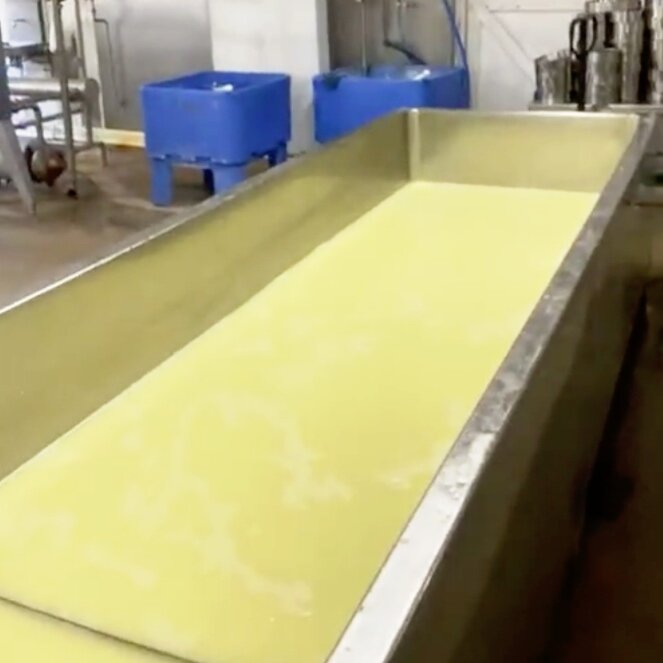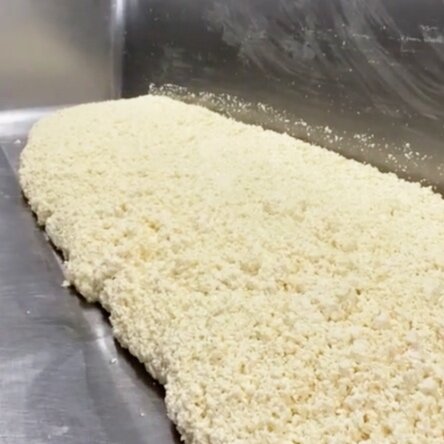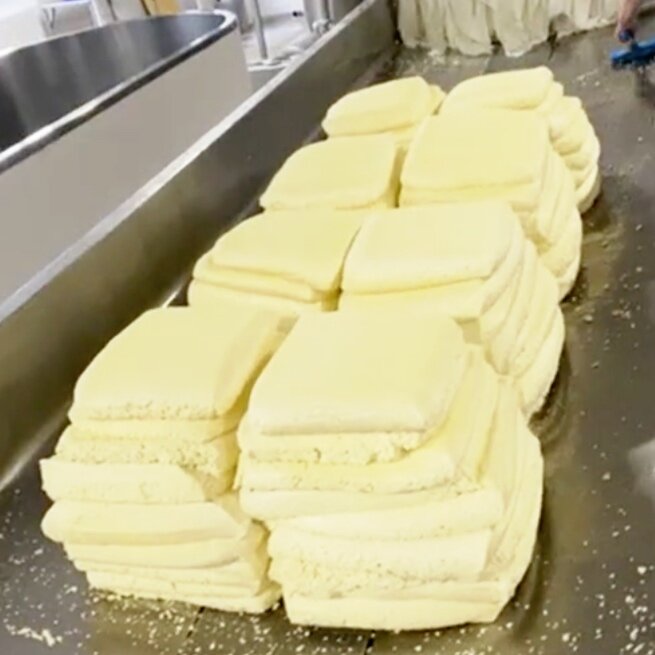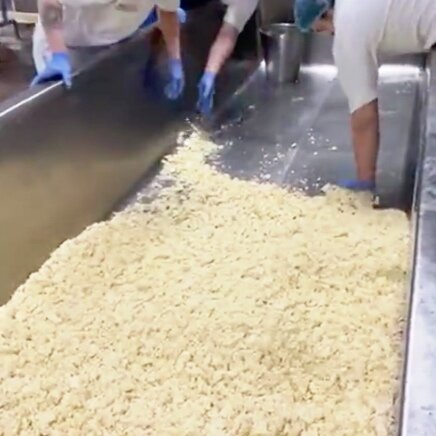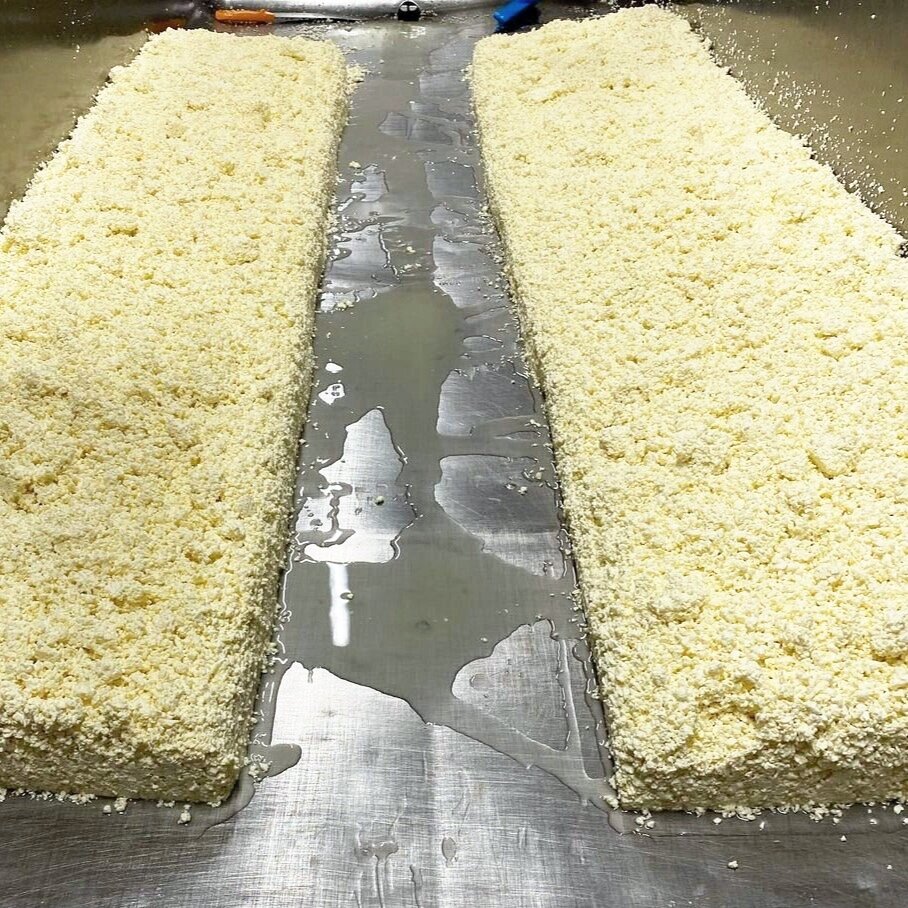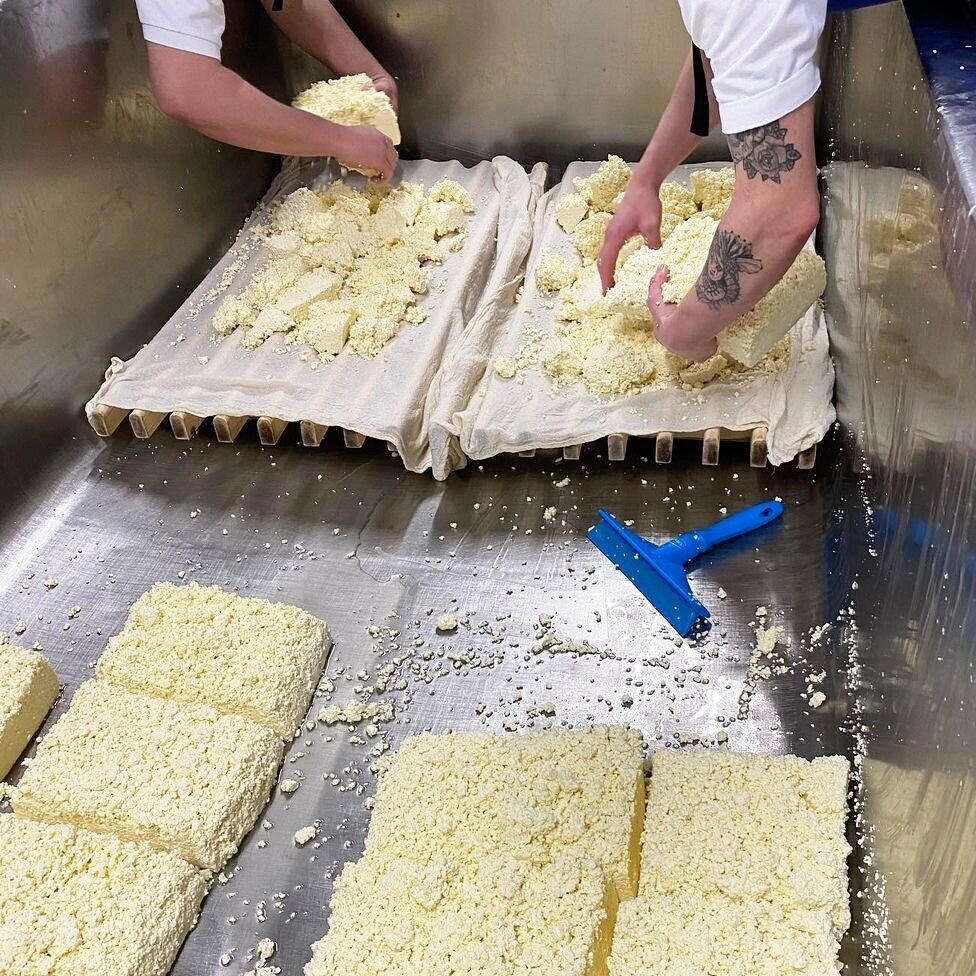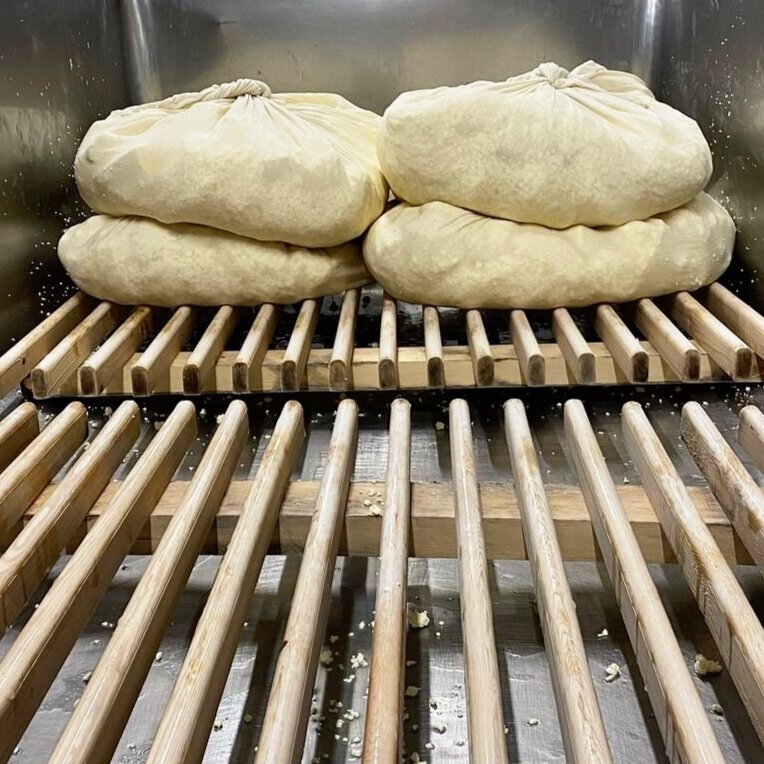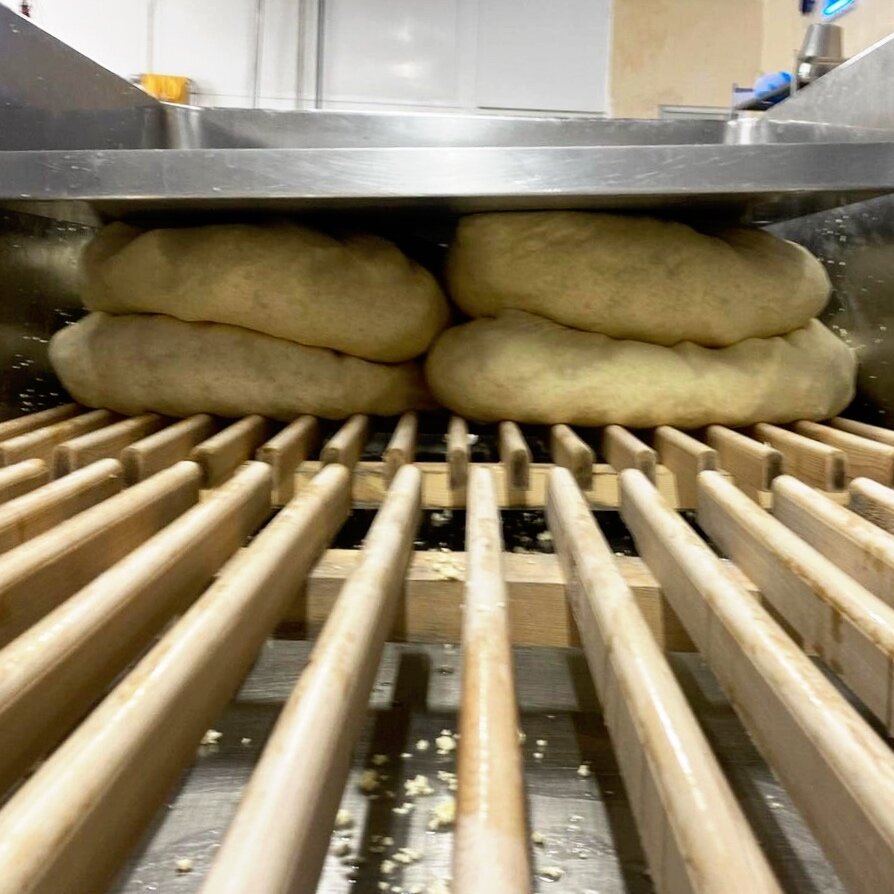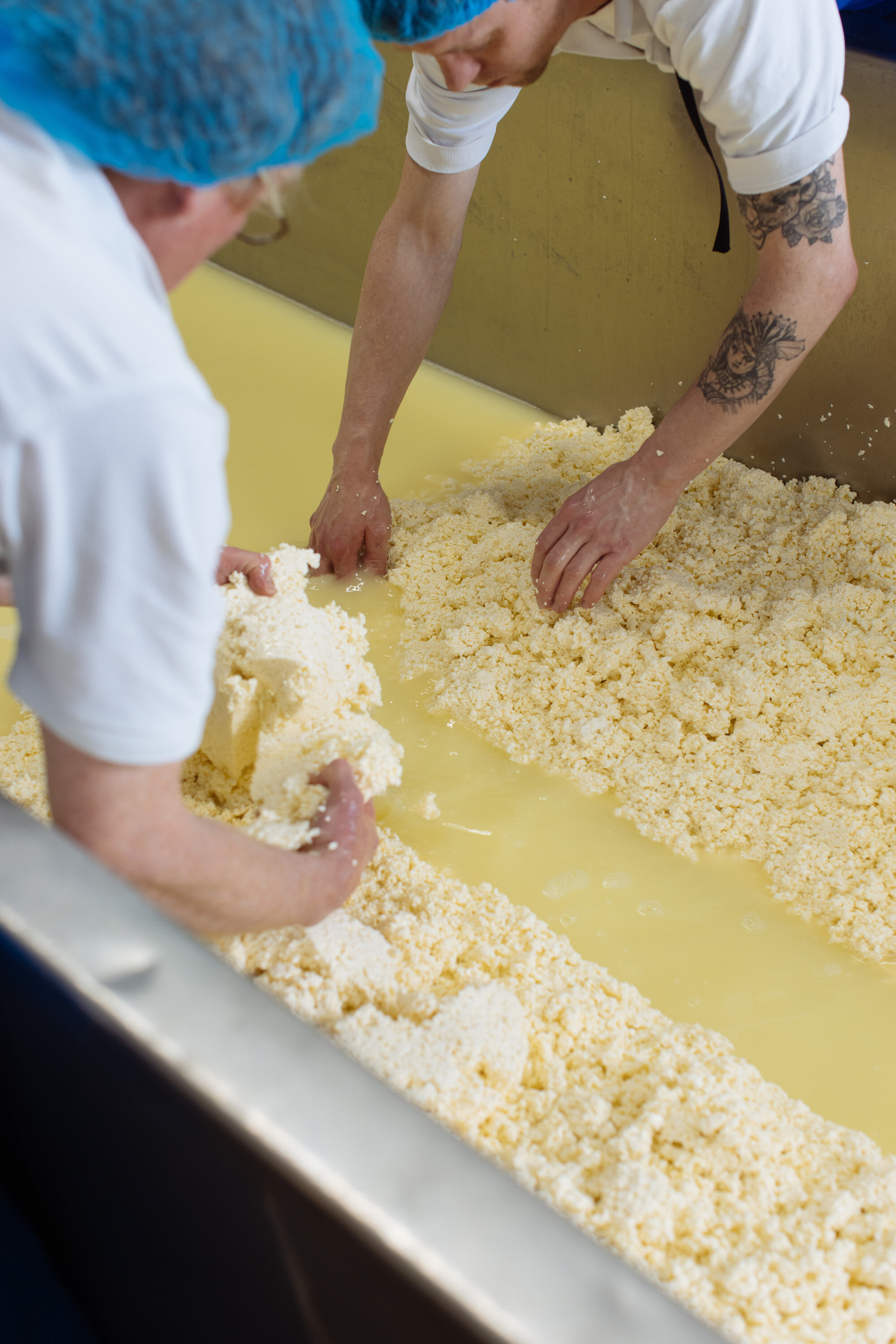In whatever you do, it’s always healthy to ask questions – to challenge yourself and avoid complacency. At Westcombe Dairy we always try to ask why we do things the way we do, then if (and how) they can be improved.
Close-up of the Westcombe herbal ley pasture
It’s an approach we’ve long taken on our farms, where we’ve worked hard over the years to improve the health of the land and the quality of our milk. Adopting regenerative farming methods has led us to stop growing maize due to its negative impact on topsoils, remove soya from our cows’ diet, and evolve our pasture from conventional feed grasses to a diverse herbal ley. We’re also in the process of dividing our grazing fields into smaller paddocks. This will give the cows a fresher, younger ley to graze and help keep them stimulated as they do. It also means they’ll tramp and fertilise each field more thoroughly before moving on to the next. All of this will help regenerate the land and give us richer, better structured and more microbially active milk.
It was a similarly questioning approach that led us to build our hillside cheese cellar. When it came time to replace our old ageing room, we could have updated it with a like-for-like facility – one that still used electricity to run the humidifying fans 24/7 – but it didn’t feel right. Instead, we considered our natural resources and looked to the wider cheesemaking community, in this case Comté-makers in the French Alps. We now have a sustainable ageing cellar built into the insulating Westcombe clay. It is naturally cooled and humidified by water from a spring that rises in the hill, then circulates around the cheese cellar to create the perfect ageing conditions.
Westcombe Cheddars ageing in our underground hillside cheese cellar
In the dairy itself, a questioning approach is also important, but a little trickier. We really pushed our cheesemaking on around 15 years ago, when we perfected our Cheddar as it’s known today. This effort was awarded with a Slow Food ‘Artisan Somerset Cheddar’ designation and the BBC Food & Farming Award’s ‘2012 Best Food Producer’. Since then, we’ve refined our cheeses cautiously and incrementally – a necessary approach when you’re dealing with something that takes at least 11 months to reveal its character.
Rob Howard turning and stacking curd slabs as part of the daily Westcombe Cheddar make
But with the arrival of Rob Howard as Head Cheesemaker in late 2019, we now have an ally when it comes to asking more questions in the dairy. Rob is not only a fine cheddar maker, he’s also an avid collector of historic cheddar recipes and methods. During 2020 our conversations increasingly turned to bygone farmhouse cheddar makes and their diversity. It got us thinking about why things are done a certain way: why we hold on to some methods and discount others. But while theoretical talk is all well and good, nothing beats actually doing it, so starting in February 2021 we decided to conduct a series of historic cheddar makes to see what we could learn. PS. If you’d like to know more about the history of cheddar and its four prevailing ‘systems’, catch up with this excellent Neal’s Yard Dairy blog.
JOSEPH HARDING MAKE
Our first historic make was the Joseph Harding method. Known as the father of modern cheddar, Joseph Harding (born 1805 in nearby Wanstrow) pioneered many of the techniques that begat today’s farmhouse cheddars. He introduced a more scientific approach and stricter hygiene practices. Harding was also a passionate educator, journeying as far as Scotland to teach other cheesemakers the art of cheddar making. He is pretty much responsible for the globalisation of cheddar, as he taught cheesemaking to visiting American and Australian cheesemakers. Indeed, for many years the English way of cheddar making was called ‘the Joseph Harding Method’ in the US.
So on 5 Feb 2021 we kicked off our historic cheddar series with a true Harding make, taking 1000 litres of our fresh raw milk and following the ‘instructions’ in an 1860’s booklet from Rob’s library. It has to be noted here that the information we have worked with is not presented as an exact science. These were not the days of hand-holding recipes with contextualising introductions and good editing. Instead, the booklets and pamphlets in Rob’s collection are highly matter-of-fact ‘outlines’. As such, we had to fill in some blanks with educated guesses based on our daily makes and our understanding of the realities of dairy farming/cheesemaking 100+ years ago.
After heating the milk and adding our starter and rennet, we hand-cut and stirred at 38°C to let the curds form and acidify, before pitching (leaving them to settle). Harding is credited for his improved curd-draining techniques, but his method is a far cry from our typical make. While we cheddar our curd slabs by gathering, turning, stacking and re-stacking them to expel whey and transform their texture, with the Harding make the curds were simply pulled to one side of the vat and left to free-drain. After around 2.5 hours, we cut up the slab and ran the pieces through our traditional peg mill, then mixed in the salt and pressed the milled curds into our cheddar moulds. Time will tell how these cheeses turn out, but to our eye it looks like we have made a lovely batch of historic Cheshire cheese! Hmm. Well, Cheshire was the dominant cheese style in Britain in 1860, so maybe it’s not a coincidence.
CANNON MAKE
With the Harding cheddars wrapped in cloth and safe in our ageing cellar, the following Friday (12 Feb) we undertook a true Cannon-method cheddar. This make is close to our hearts (and indeed, our Westcombe Cheddar) as it was developed just down the lane at the site of Milton Farm, where our milking parlour is now found. Created by Edith Sage (née Cannon) and her father Henry in around 1890, the Cannon method is an update of Joseph Harding’s cheddar, as described in the 1917 book Practical Cheddar Cheese-making by Dora Straker. While not a great deal is known about Edith Cannon, it seems she was a formidable cheesemaking talent. Born in 1868, she was making cheese with her father by the age of 12. By 19 she’d won the championship prize at the Frome Cheese Show and by 21 she was teaching the Cannon method at a national school for cheddar cheesemakers.
Legend has it that Edith Cannon was revered as cheddar-maker due to her instinctive abilities. As her school moved from farm to farm, peopler would note how she’d react to subtle fluctuations in the milk and adjust her timings accordingly, allowing her to make consistently high quality cheeses year-round. This baffled others cheesemakers, especially those trying to create a set process for cheddar (which no doubt led to what we now know as ‘block’ production). But at Westcombe, we identify with Edith Cannon’s intuitive approach. We’re also led by our senses in the dairy, knowing that every day’s milk is unique and will behave in its own way. Without observing, tasting, touching and smelling the curds as they develop, we wouldn’t be able to make our cheese the way we do.
For the Cannon make we again took 1000 litres of a our beautiful raw milk and added our starter culture and rennet to separate the curds and whey. Although the make was an advancement of the Harding method, for us it was still a surprise as the cheddaring stage again just didn’t feature. Once drained, the curds are simply cut into blocks, then bundled into muslin and weighted down to drain the residual whey. After a number of hours, the pressed curd blocks were milled, salted and put into moulds. What was interesting to note here was, even with this fairly modest deviation from the Harding method, the milled curds were quite different in feel and structure. Time will tell how these differences equate to taste and texture in the matured cheese.
T.C. CANDY MAKE
For our third historic make we took on the Candy cheddar system. This make was developed around the same time as the Cannon method, but takes a slightly different approach in its updating of the established Harding method. Like the Cannon make, the Candy system became one of the definitive farmhouse cheddar methods and is still influential today. On Friday 19 Feb we followed the same initial procedure as the two makes above, using 1000 litres of milk and leaving the curds to pitch and free-drain while gathering them in the centre of our vat.
While again the Candy method doesn’t involve any cheddaring as we know it, its major deviation from the Cannon method is in the techniques of preparing the curd blocks before milling. Instead of wrapping and pressing larger blocks, the Candy system gathers the curds and cuts them smaller, before wrapping them in cloth and turning them a number of times over the course of several hours. So here it’s more to do with the agitation of the blocks to release excess whey than the application of weight through pressing as in the Cannon method. And yet again, the milled curds were different in texture and feel, indicating that the finished cheese will have its own character.
So there we have it. Three historic makes in three weeks, and three batches of unique cheddar added to our ageing room to develop alongside our classic Westcombe Cheddars. In the video below you can see the new cheeses ready to go into their dedicated shelf space to begin their ageing.
And what have we learnt? Quite a lot actually, although as always with cheddar, time will tell. We’ve been really interested by the formation of curds and their acidification using temperatures and techniques quite different to our everyday classic Cheddar make. We’re repeating all the historic makes to refine our process and ensure we have achieved consistency. Follow us on social media for more updates. All in all though, the aim of this project is about asking questions and being true to ourselves. It’s all about refining our cheesemaking in order to produce the very best possible cheese we can – cheese made in harmony with nature, that fully expresses the beautiful Westcombe terroir and represents the best of each season.



